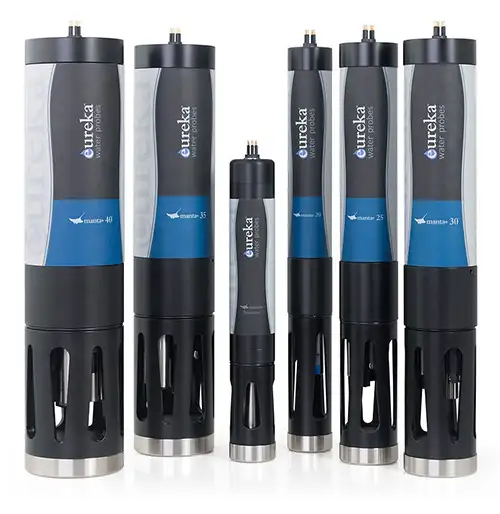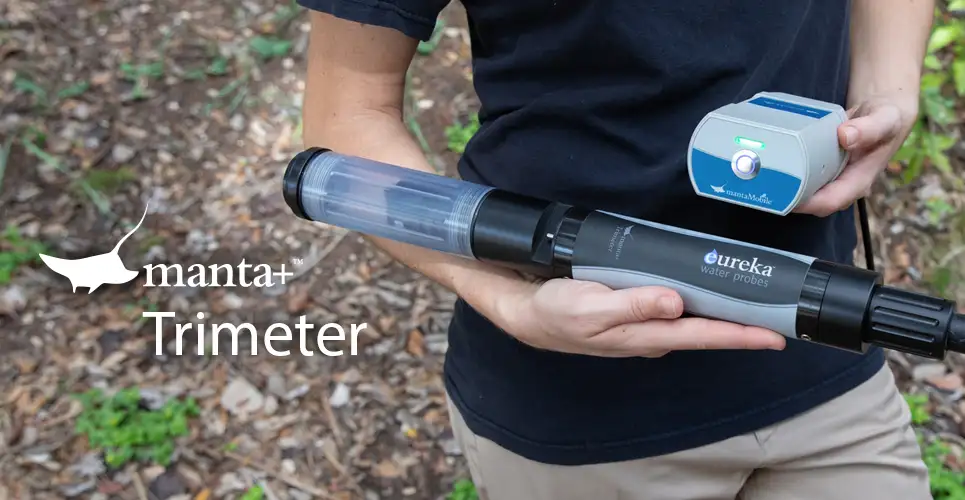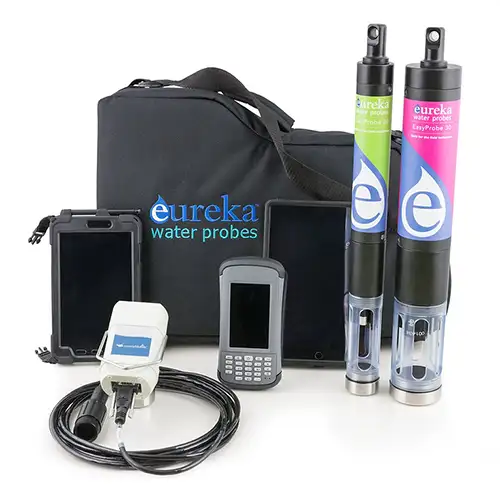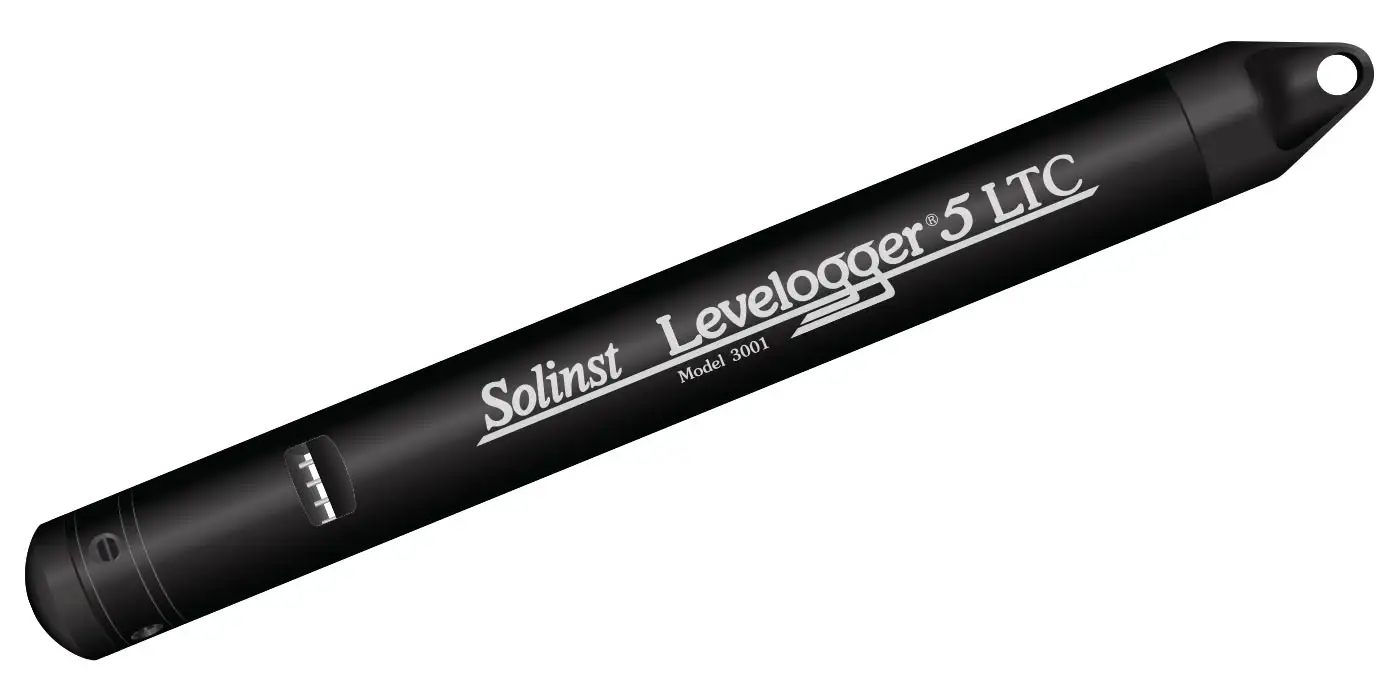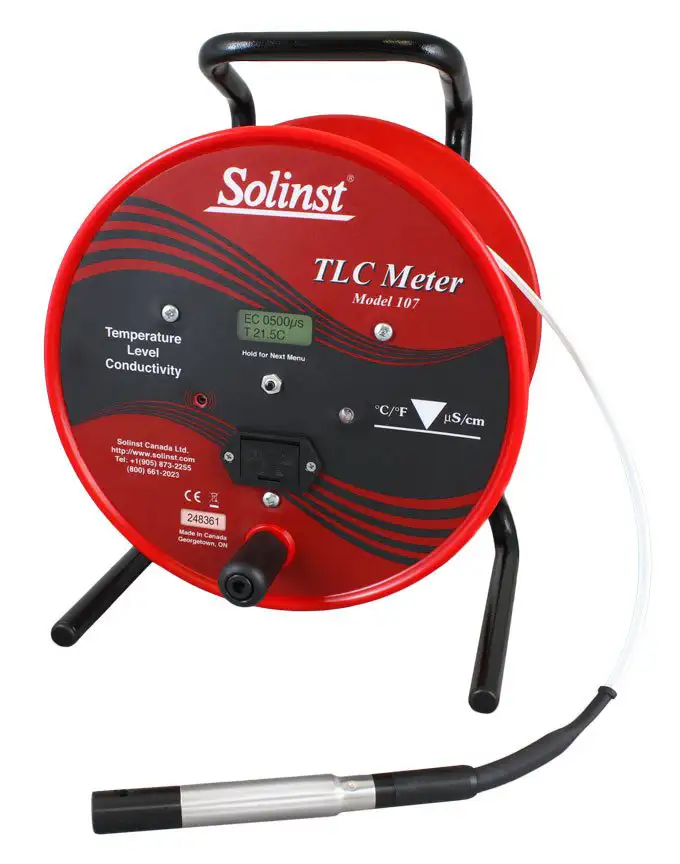pH Sensor: Water Quality Probe
Solinst Eureka
2113 Wells Branch Pkwy, Suite 4400
Austin, TX, USA
78728
Tel: +1 512-302-4333
Fax: +1 512-251-6842
email: [email protected]
Water Quality Probes
Solinst Eureka, a global leader in the design and manufacture of multiparameter water quality sondes.
Solinst Field Services
Safeguard your project’s success and mitigate any potential for downtime or additional costs.
Why measure pH?
pH is a measurement of water’s acidity or alkalinity. Water with pH less than seven is acidic; water with pH greater than seven is alkaline (basic). The pH of water is determined by dissolved, pH-active salts. For instance, dissolving sodium hydroxide in pure water will increase the pH because the hydroxide ion is a pH-active base, and dissolving hydrogen sulfide in pure water will decrease pH because the hydrogen ion is a pH-active acid. However, dissolving sodium chloride in water will not change the pH because neither sodium nor chloride is a pH-active ion.
The pH of water determines the form of dissolved, pH-active salts. Suppose, for instance, that an ammonia-based fertilizer flows into a river via rainfall runoff. If the pH of the river is below nine, most of the ammonia species present will be in the form of ammonia, NH3. If the river pH is above pH nine, most of the ammonia species present is in the form of ammonium, NH4+. This is important because ammonia is toxic to biota, where ammonium can be a nutrient for biota.
pH also determines the solubility of metals in the water. Metals like iron and chromium are more soluble at low pH, and so more available for uptake by fish and other biota. At high pH, the metals are less soluble, and more likely to be bound into sediment than available for biota.
Changes in long-term pH trends can signal the need for more detailed chemical study of the water and its contamination sources.
How is pH measured?
pH is measured with a pH sensor and reference electrode. The pH sensor is a small, glass bulb filled with an electrolyte of known pH. If the pH of the sample water is different from that of the electrolyte, a voltage is created across the glass bulb. That voltage changes predictably with the pH of the sample water and is measured through the reference electrode. The reference electrode contains an electrolyte separated from the sample water not by a glass bulb, but by a micro-porous material, often Teflon, which allows the electrolyte to contact the water without being quickly diluted by the water.
There are two types of reference electrodes found in water-quality instruments. The first employs a small volume of high viscosity, “gelled” electrolyte. The gelled-electrolyte reference electrodes do not require periodic replacement of the electrolyte. However, they must be replaced approximately once a year or more often because the user cannot replace the electrolyte.
The second type of reference electrode employs a large volume of low-viscosity (un-gelled) electrolyte. The resulting “flowing-junction” typically establishes a more stable measurement than do gelled-electrolyte reference electrodes, especially as the gelled electrolyte ages. The flowing-junction electrolyte require new electrolyte every two months or so. However, refilling the electrolyte means that you do not have to replace the entire reference electrode (as you do with gelled-electrolyte models).
The reference electrode used for pH measurement can simultaneously facilitate measurements with ORP electrodes and ion-selective electrodes (ISE’s).
pH sensors are ordinarily calibrated with commercially available standards, called pH buffers. You can choose two- or three-point pH calibration. Two-point calibrations use a seven (neutral) buffer and a second buffer whose value is near that of the waters you intend to monitor, normally a four buffer (acidic), or a ten buffer (basic). If you are measuring in waters whose pH might range significantly above and below seven, you can increase your measurement accuracy slightly with a three-point calibration using seven, four, and ten buffers.
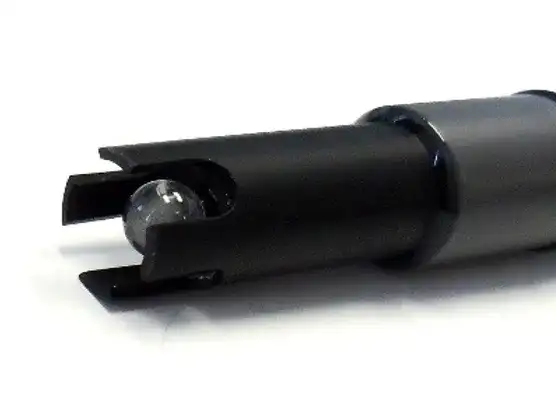
pH Sensor for
Water Quality Sondes
- Range
0 to 14 pH units - Accuracy
Accuracy ±0.1 within 10 degrees C of calibration; 0.2 otherwise - Resolution
0.01 - Units
pH units - Calibration
pH buffers – two required, three points optionally - Maintenance
cleaning and calibration
refilling of the reference electrode - Sensor Life
6+ years - Sensor Type
glass pH sensor; Ag-AgCl refillable, flowing-junction
reference electrode
Solinst Eureka’s pH sensor
Solinst Eureka’s pH electrode with free-flowing junction reference electrode, is easy to maintain and simple to refill. A few pennies and a few minutes every month or two to refill the Solinst Eureka style reference electrode saves you money each year, and assures more stable readings. The refillable reference electrode is less susceptible to errors in low-conductivity waters, unlike gelled electrolyte used by other manufacturers.
What should I know about pH measurement in the field?
pH sensors are sensitive to changes in temperature, but most instruments automatically compensate for temperature effects. pH accuracy is usually stated as +/- 0.1 pH units, but this can change during extended field deployments.
With proper maintenance and calibration, you can expect good performance from a pH sensor in the field for several weeks or more. If you notice that the pH readings take more than a minute or so to stabilize, or if the pH readings are erratic, you may need to clean the pH sensor and/or replace the reference electrolyte (if you have a refillable reference electrode).
In low ionic-strength waters, i.e. those with conductivity less than about 200 µS/cm, the flowing-junction reference electrode is superior to the gelled-electrolyte reference electrode because it is more successful in preventing “junction potentials” that can bias the pH reading lower by up to one pH unit or more. A partially depleted, gelled-electrolyte reference electrode can calibrate easily in standard pH buffers (which have high ionic strengths) but cause undetectable errors in the field. The best way to avoid this problem is using a freshly refilled, flowing-junction reference electrode and checking pH calibration with a low ionic-strength buffer.
Related Products
Manta Series Water Quality Probes
Solinst Eureka offers the largest selection of water quality sensor technologies in the industry. So in addition to standard configurations, each probe may be customized for your specific application. Pick sensors of your choice to fully populate larger probes, or add a battery pack to convert a probe to a logging device.
Manta Trimeter Water Quality Probe
The Trimeter holds any one sensor* from the Sensor Parameters list, Plus temperature and depth sensors (both are optional). For example, a Trimeter configuration could be turbidity, temperature, and depth. Another example could be DO and temperature.
EasyProbe: Water Quality Sondes
The EasyProbe, by Solinst Eureka, is a high-performance, cost-effective water quality monitor. It's ideal for spot-checking, remote telemetry, education, research, aquaculture, and more. The EasyProbe20 includes sensors for temperature, dissolved oxygen, conductivity, and pH, while the EasyProbe30 adds a turbidity sensor. Eureka multiprobes are known for their reliability, with a three-year warranty covering all sensors, and have the lowest maintenance costs in the industry.
Water Level, Temperature & Conductivity Datalogging
The Levelogger 5 LTC measures and logs water level fluctuations, temperature and conductivity. It is programmed to record at intervals as often as 2 seconds. It includes an 8-year battery, memory for 100,000 sets of readings, and comes in 6 pressure ranges. A PFAS-free coating (inside and out) provides superior corrosion and abrasion resistance.
TLC Meter – Measure Accurate Temperature, Level & Conductivity
A TLC Meter provides accurate, stable temperature and conductivity measurements, displayed on a convenient LCD display for easy reading. Static water level and depth of readings are read off Solinst flat tape, which is precisely laser-marked every mm or 1/100 ft. Tape lengths are available to 300 m (1000 ft).

